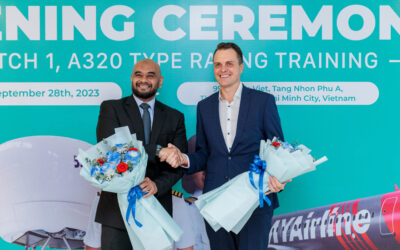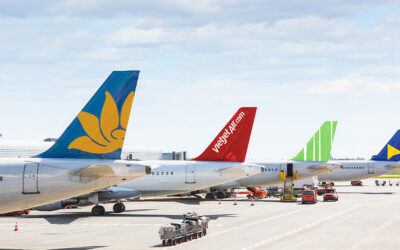Aviation demand is set to be fueled by the rising affluence of the middle classes in emerging markets. Consequently, the air traffic industry is forecast to grow most significantly in Africa, the Middle East and the Asia-Pacific region.
According to the previous data furnished by Directorate General of Civil Aviation, domestic air passenger traffic in India has increased by 17.71 per cent during January-April 2017. In China, robust domestic passenger travel has fueled growth in many airports in March: Shijiazhuang led the way (+41.2%), followed by Tianjin (+20.1%) and Nanchang (+17%). Domestic arrivals in Africa jumped by 11.4%, while international arrivals were up by 2.3% and regional arrivals by 2%. Domestic and inter-regional growth is becoming increasingly significant growing at nearly 6% in the Middle East, fueled by urbanization, an increase in the number of mega-cities from four to nine, and a doubling in the propensity to travel for business and tourism, by 2034. According to Airbus’ Global Market Forecast the Middle East will need an additional 890 single aisle aircraft driven by these trends.
Mainly propeller aircraft such as ATR-72s or ATR-42s are used on short haul domestic flights. Aircraft manufacturer ATR is confident they can take a sizeable share of the Middle East and Africa single aisle, narrow body aircraft market that is dominated regionally — and globally — by Boeing Co. and Airbus Group. In 2016 the company reached its second-highest turnover ever (US$ 1.8bn), and its third-highest year in terms of deliveries (80 aircraft), confirming the appetite of the market.
For airlines it is much more economical to operate a turboprop than a jet. ATR 72-600 series is the most economical and ecological way to fly. ATR 72 was developed as a stretched variant of the ATR 42, and entered service in 1989. It has been typically employed as a regional airliner, although other roles have been performed by the type such as corporate transport, cargo aircraft and maritime patrol aircraft. ATR 72 aircraft is twin engine, turbo prop aircraft capable of carrying around 70 passengers. Aircraft have a high wing, with six bladed propellers attached to Pratt & Whitney engines on the wing, a sport “T” tail, and four abreast seating. The -600 variant of the ATR 72 features a full glass cockpit.
That matters not only for airlines.
Turboprops used for domestic flights have an effect on a pilot as well. Something like an ATR used in short or medium haul may require a pilot to work in 3-4 day blocks operating several flights per day. A large number of flights require faster reactions and time management skills. Workplace in domestic airlines is dynamic and perfect for a communicative person, who prefers spending time with the family. A pilot who lives near his base will often takes day trips or turns, where they can spend every night at home with their family.
Most domestic flights range from 90 minutes to 5 hours. For shorter hops, pilot can fly up to five a day. For longer flights, there is generally only one or two legs a day. Mostly pilots operatetrips that combine one to five days of flying, with the daily average hovering of around six hours.
Pilots starting out on domestic routes (as first officers) usually earn about 50,000 € on turboprops. They can progress to a maximum of about 150,000 € when working as captains. This can be considered an average salary in the world.
It is evident that the demand for domestic flights, single aisle aircraft and their pilots is growing. Africa and Asia have been rising fast and the economy of these continents is sweeping down others. While ATR aircraft manufacturers are already collecting the details for single aisle planes, pilots can choose which type – 72 or 42 – to take up for training and how far away from home they want to work.








